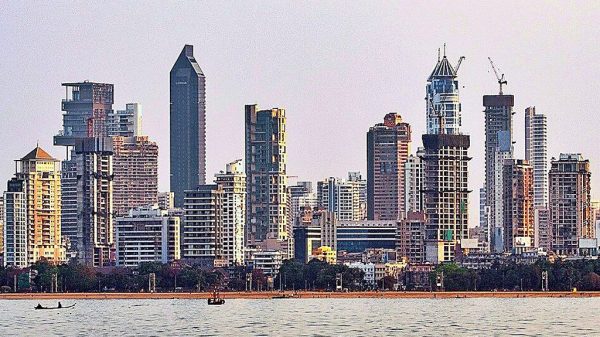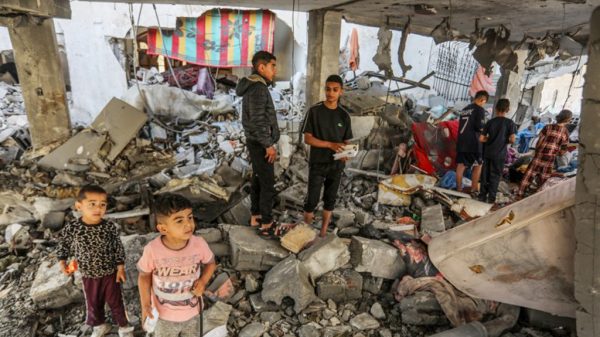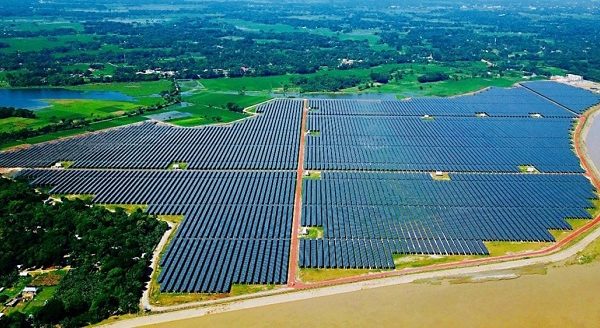Eliminating Poverty in Post-Pandemic World

Dr. Ranjan Roy:
Ending poverty (SDG-1) is one of the biggest challenges facing humanity in the 21st century. Globally, about 150 million people are living in extreme poverty, that is, living on less than $1.90 a day. Due to Covid-19 pandemic, global extreme poverty has increased in 2020 for the first time in over 20 years. Poverty is the inability of fulfilling the most basic needs such as health, education, and access to water and sanitation, the UN expresses.
The World Bank estimates, poverty reduction strategies have grossly been slowed down over the last year mainly because of the Covid-19 disruptions, which compound the impacts of natural disaster. In Bangladesh, poverty rate has been increased to double (42 per cent) in December 2020 from 21.6 per cent in 2018 for Covid-19 fallout, according to the survey of the South Asian Network on Economic Modelling (SANEM).
Bangladesh has a good record in reducing poverty. Poverty declined from 44.2 to 13.8 percent over the period from 1991-1992 to 2016-17. Till before coronavirus disruptions, Bangladesh alleviated poverty exponentially. In parallel, this country had a fair progress in increasing life expectancy, literacy rates and per capita food production.
Over a decade, Bangladesh was capable of maintaining 6 per cent plus growth rate, which reached to 7.3 per cent in 2016/2017, according to the World Bank estimates. This country fulfilled the eligibility criteria for graduation from the LDC list in 2018, and is on track to graduate in 2024. These scenarios indicate the continuous success of poverty elimination initiatives of the Bangladesh government.
The Covid-19 impact on economy is substantial, although the second wave of coronavirus is still unfolding. The impacts of Covid-19 pandemic on main job creating sectors, namely, agriculture and garments are extremely severe. Nation-wide lockdown puts in place Covid-19 protecting measures — such as border closures, restrictions of movement, closure of restaurants, and community quarantines — resulting in restricted access to production, processing and marketing. Restrictions significantly affect agriculture, fisheries, livestock and garments sectors, which lead to job loss, unemployment, inequality, hunger, food insecurity, starvation and malnutrition.
At least 91 per cent of farms are small-scale, with an average area of less than 1 ha. Small-scale farmers are highly vulnerable to the impacts of Covid-19 as they are hindered from working on their land or accessing markets to sell their produce, buy seeds and other inputs, FAO shows. The pandemic has adversely impacted segments of agriculture as the demand for food has dramatically increased, while orders and events are getting cancelled.
Informal workers, whether wage workers or self-employed, have been unprecedentedly impacted by the pandemic. Millions of small and medium businessmen have lost their business. Informal sector creates about 85 per cent of the total employment. In urban areas, people involved with informal sector/economy like labourer, rickshaw puller, van driver, scooter and taxi driver, transport labourer, part time housekeeper, brickfield labourer, migrant worker, street vendor, and hotel and restaurant labourer have lost their livelihoods. In rural areas, livelihoods of self-employed and wage workers are at risk as agro-food supply chains and markets are being disrupted because of the protectionist measures.
Rural women are hit harder by the unique health, social and economic crises. They make up 41 per cent of the world’s agricultural labour force. Rural women are more at the risk of income loss, owning to (nation-wide) lockdown and/or holiday. They are facing more and more discrimination, inequality and violence within the family and beyond.
The coronavirus lockdown has led to a ‘gender-based violence’ as vulnerable people spend all day with the abusers, studies indicate. FAO estimates, stay-at-home orders also create challenges around food insecurity, one of their key responsibilities directly affected by Covid-19. Food insecurity usually affects more women than men in any disastrous situations.
Evidently, the poorest suffer the most from Covid-19 as well as from other natural disturbances and climate change. Ending poverty in the post pandemic period largely hinges on reducing vulnerability through managing the coronavirus crisis as well as natural disasters such as flood and drought. It has already been made clear that national lockdown won’t work alone. Simultaneously, strict implementation of 18 points is crucial. These points have been made by the government, considering the critical situation of coronavirus infection. Wearing mask properly is mandatory for all. All kinds of social gathering must be limited and people’s gathering in highly risk-prone areas must be prohibited.
Lockdown is a useful instrument to flatten the coronavirus infection curve. However, harsh implications of imposing lockdown on, particularly, poor people must be addressed, that is, basic needs (foods) of the working class (i.e., informal workers) have to be met. To make lockdown effective, its strategy should be a balance between protecting people’s lives and their livelihoods.
Increasing ‘social safety net’ including direct cash transfer to the poor is crucial to meet the basic needs of people living below poverty line, day labourers and for workers in the informal sector. The Perspective Plan of Bangladesh (2021-2041) and 8th Five Year Plan (July 2020-June 2025) have stated the need for having an “effective” social safety net.
Given the vulnerability of a large part of the population, expending safety net will be critical. Despite there has been improvement (e.g., digital payments infrastructure) in providing assistance to the vulnerable people under the National Social Security Strategy, still a bulky portion of population is outside the social protection system as illustrated with the Covid-19 experience. Launching a dedicated social safety net programme is urgent.
Creating employment opportunities is vital for ending poverty. Rural transformation has played a major role in poverty reduction. It can be a hub for job creation. The 8th Five Year Plan presents a plan for “rural transformation.” Acceleration of this, the transformation can be preceded by expanding ICT services, mobile financial services and rural electrification; improving rural communication and transport; investing in rural entrepreneurs and market; facilitating rural trade and commerce; and removing digital divide between urban and rural areas. Bangladesh’s employment strategy has to shift a focus on greater skill-intensive employment.
Women employment has notable contribution to GDP growth, World Bank shows. Enhancing women employment requires several measures, including promoting the growth of sectors that are more amenable to women employment, for example, labour-intensive industries like garments, shoes, and electronics; establishing infrastructure to facilitate women employment, and ensuring the provision of maternity leave and child care.
As research indicates, the world is entering an age of (climate) pandemics, government should invest in creating green jobs – jobs that produce goods or services that benefit the environment or conserve natural resources, the Bureau of Labour Statistics defines. Typical examples of this kind of jobs include sustainable forestry, solar power, recycling, water conservation, environmental remediation, and wind energy. These jobs help improve energy efficiency, limit GHG emissions, minimise waste, and restore ecosystems.
Amid pandemic, panic related to food and agriculture is a significant concern. Panic-buying disrupts food systems, i.e., growing, harvesting, processing, distribution, marketing, transporting and others. As Covid-19 spreads, staples are stockpiled, leaving markets empty. Governments must ensure price stability of essential products. To do so, and to impair market syndication, regular basis monitoring is indispensable.
Rural transformation through leveraging non-farm services is key to poverty elimination. The 8th Five Year Plan has deduced strategies (e.g., promoting export-oriented manufacturing-led growth and agricultural diversification) and policies (e.g., macroeconomic stability and fiscal policy for equitable growth) for accelerating pro-poor and inclusive growth whose implementation would be critical to eliminate extreme poverty by 2030 and to become a high-income country with absolute poverty approaching extinction by 2041.
To conclude, a sustained rapid GDP growth is essential for sustained poverty reduction, addressing familiar development challenges (e.g., income inequality and weak rural infrastructure) and responding to unique challenges of Covid-19 (e.g., boosting the healthcare sector to enhance access). The GDP growth must be pro-poor so that it allows the maximum participation of the poor and marginalised group in the growth process.
The writer is a Professor, Department of Agricultural Extension and Information System, Sher-e-Bangla Agricultural University, Dhaka.





























Leave a Reply